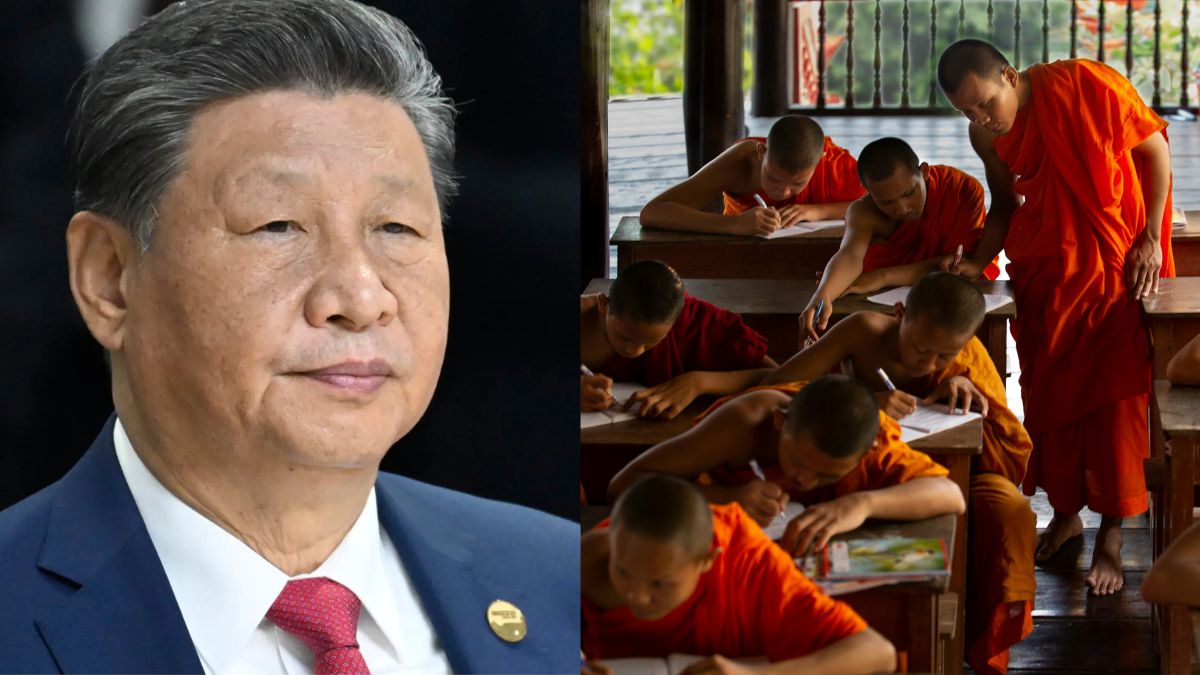In a significant move, India will roll out its first-ever curriculum for Buddhist monasteries. Reports suggest the government will implement the program within this month. The initiative aims to standardize education and promote a sense of patriotism in Himalayan religious centers located near the border with China.
Buddhist Monasteries In Himalayas
India, where Buddhism began, has many old monasteries. In the 1950s, many Tibetans came to India and started new religious institutions.
Now, India aims to protect these places from China’s influence. “We are trying to inculcate Indian identity through education along with Buddhism to make sure China can never control our monasteries in the Himalayas,” said Maling Gombu, a Buddhist worker of the ruling Bharatiya Janata Party (BJP). “Thousands of children living and studying in remote monasteries deserve education recognised and certified by India,” added Gombu, one of a team promoting Indian Buddhist traditions and national education in Arunachal Pradesh.
About 600 monasteries scattered across the northern states of Sikkim, Himachal Pradesh, Uttarakhand, and the regions of Jammu and Kashmir and Ladakh offer training in four types of Tibetan and Indian Buddhist traditions.
Why Now? India’s Move To Protect Monasteries From China
Monastries also teach modern subjects and English, but the courses lack consistency outside a national education effort that aims to weld an overarching identity from India’s patchwork of languages and religions. “The non-religious education taught by monks or nuns is not acknowledged outside monasteries,” said Rajeev Kumar Singh, a director of the education ministry’s National Institute of Open Schooling. Singh, who has worked on the new curriculum that caps a five-year assessment effort, said it hoped to prepare Indian and Tibetan students for academic life in India.
Tibetans Should Also Learn Indian Culture
“They (Tibetans) are free to learn Tibetan history and their tradition, but they should learn about India as they reside here and require proper education to secure jobs outside monasteries.” Reuters reviewed a government document that showed 20 monasteries near the 3,000-km (1,860-mile) border with China have agreed to adopt the new curriculum, and officials will phase in the rest later this year.
How Are Monasteries Responding
Officials say they are talking to each monastery one by one about using the new syllabus. They also need time to print new textbooks and find teachers, especially because most monasteries are in remote areas. However, some monks, like those from the Gontse Garden Rabgye Ling monastery in Arunachal Pradesh, say their current syllabus already mixes Buddhist teachings with modern subjects. They believe the curriculum effectively prepares children to become monks or preachers.
Anout The Himalayan Monastries
About 75,000 Tibetan refugees now live in settlements managed by the Dalai Lama’s government-in-exile, the Central Tibetan Administration (CTA), which controls some monasteries directly, though not those outside the Tibetan tradition. Reuters reviewed the first batch of textbooks prepared for monasteries by education ministry officials and Indian Buddhist scholars, which delve into India’s modern and ancient history, and the nation’s role in Tibet’s freedom struggle.
What Does the Curriculum Include?
The new books focus on subjects like maths, science, and computer skills. Apart from this, students also have to study English, Hindi, and the local Bhoti language. Tharlam Dolma, the education minister of the Central Tibetan Administration (CTA), said that monks and nuns have usually managed monastery schools using their own funds. The CTA does not have the power to control or manage these schools.
India Will Offer Funds
India will begin offering funds to monasteries. Before it was run for decades by different sects of Buddhism with the help of foreign aid. The fund were used to recruit teachers, pay stipends to monks and help them in annual examinations. However, In its effort to unify school programmes, a court essentially banned Islamic schools in one if the state last year. According to the court it is violating the constitutional secularism and ordering students moved to conventional schools.












